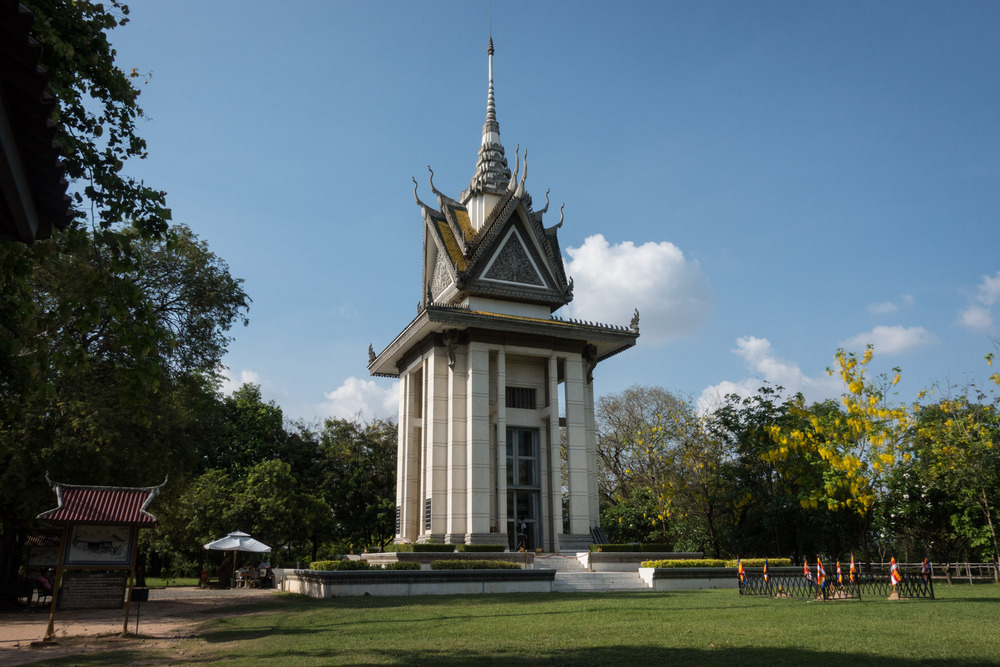Khmer Rouge Atrocities

The Khmer Rouge controlled Cambodia for less than four years, from April of 1975 until January of 1979. In this short period they emptied the cities, shut down schools and hospitals, abolished currency, banned religion, systematically split up families, and forced the population to live as slaves on state-run communal farms. The regime murdered anyone they feared was capable of undermining their control: doctors, scholars, artists, and other educated professionals, those with ties to foreign governments, ethnic Chinese, Thai, Vietnamese, and minority peoples, Catholics, Muslims, Buddhist monks, and city-dwellers were executed indiscriminately. To prevent sowing seeds of revenge, their families were killed too.
In those four years, about 1.4 million people were executed by the Khmer Rouge. Most were killed brutally, with farm tools, because the regime couldn’t afford to waste bullets. Most, before they were killed, were tortured extensively, forced to confess to elaborate conspiracies, and then condemned to death.
Besides those that were executed, millions more died from starvation, disease, and exhaustion, as a result of their forced labor in the failed agrarian communes. All in all, it is estimated that about 2.5 million people died — about one third of the population of Cambodia.
We visited two memorial sites in Phnom Penh. Both Jake and I dreaded visiting these sites. However, we felt that it was our duty as global citizens to pay our respects to those who had lost their lives, and to educate ourselves about the horrible acts that humans are capable of.
Toul Sleng was originally a high school that the Khmer Rouge converted into a secret prison and torture center. It was known by the code name S-21. The prison is located right in the middle of Phnom Penh. The site now houses the Toul Sleng Genocide Museum, although it has been left much as it was found; barbed wire covers the front of the prison buildings, and metal beds still stand in the classrooms that were used as torture rooms. Over 20,000 people were imprisoned at Toul Sleng between 1975 and 1979. Of those, less than a dozen are known to have survived.
The Choeung Ek Killing Fields are located about 15km from the city center. The site was originally an old Chinese cemetery, and several Chinese tombs can still be found on the grounds. During the Khmer Rouge regime however, this is where people were taken from Toul Sleng to be killed. Today, a white marble stupa stands on the grounds. It houses the skulls of about 5,000 unidentified people who were murdered here; many thousands more have not been exhumed.
Both sites were sobering. While walking around the memorial grounds at Choeung Ek, I found myself drawing comparisons with visiting the Nazi concentration camp at Dachau. There, the belongings of victims are now interred in a museum. Other than the officers’ quarters and crematorium, very little remains of the original site. Without knowing the history of the place, an observer would have difficulty finding any evidence of the atrocities that occurred there.
As I was walking along the elevated wooded platforms surrounding the mass graves at Choeung Ek, I saw several signs warning me to not step on bone or cloth fragments. The remains of many who were killed there have not been exhumed; rainfall periodically exposes contents of the shallow mass graves to the surface. The wooden walkway ended at the memorial stupa. I looked down and saw a broken bone, as large as a femur, half submerged in the dirt by my feet.